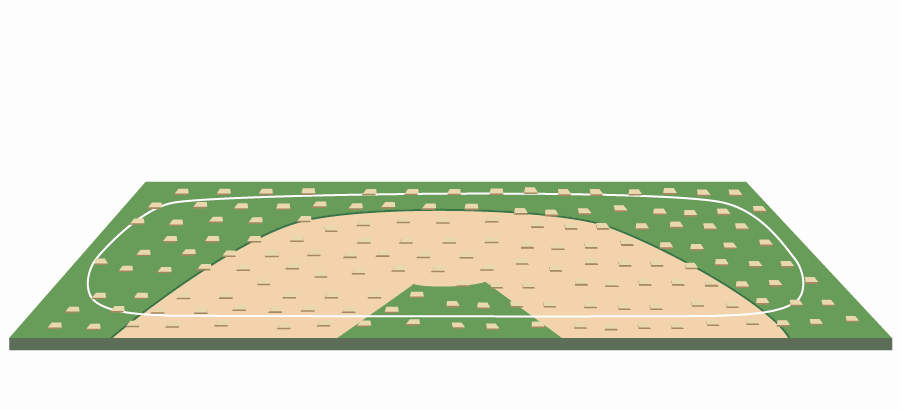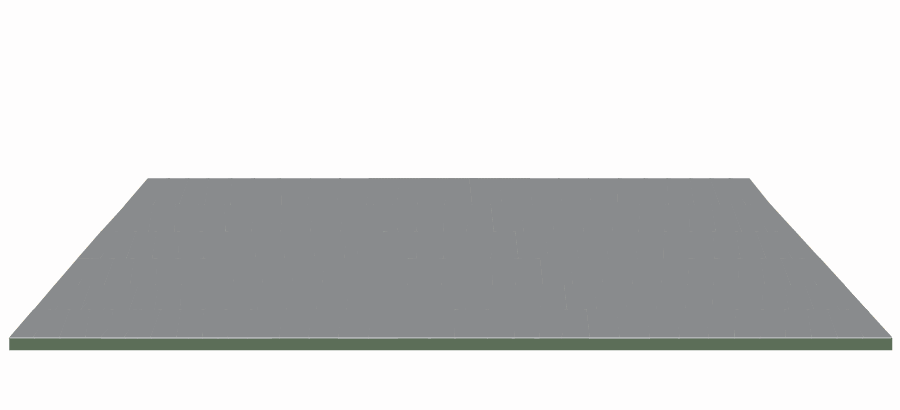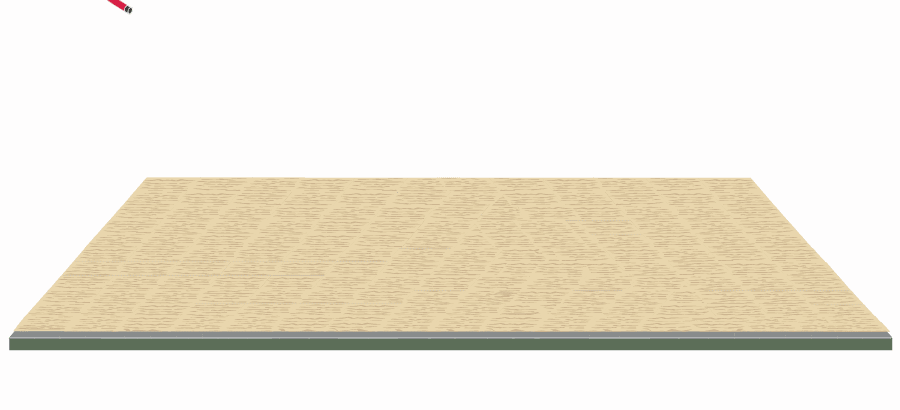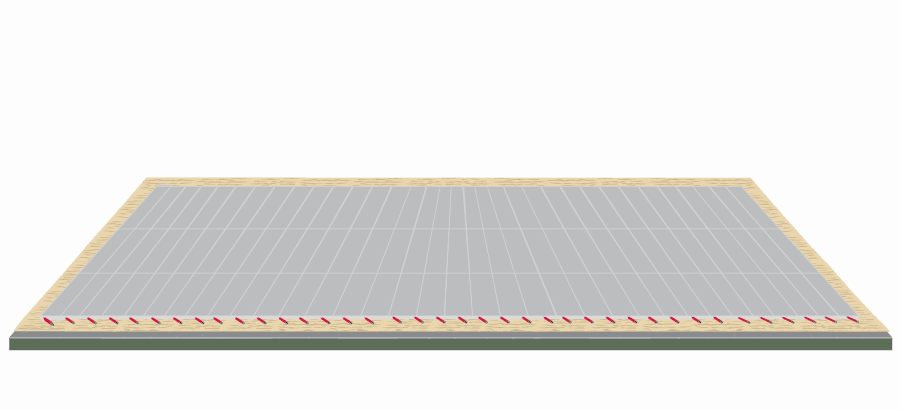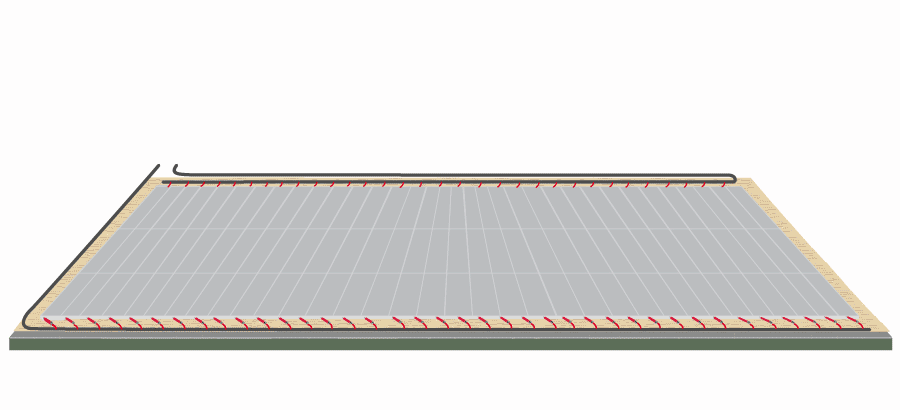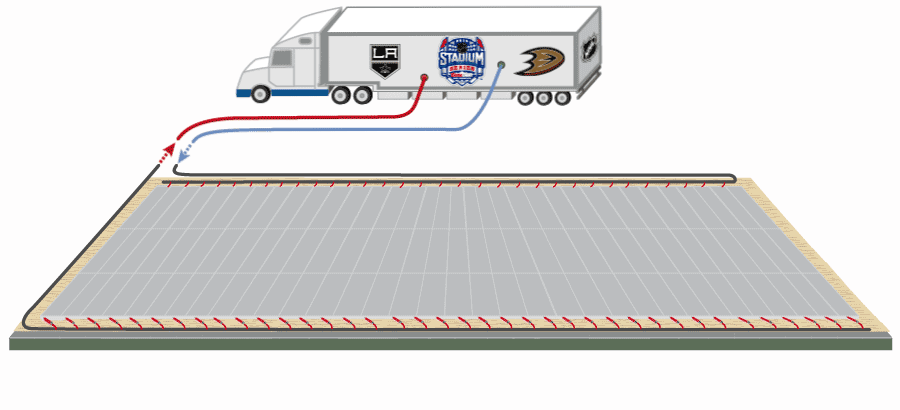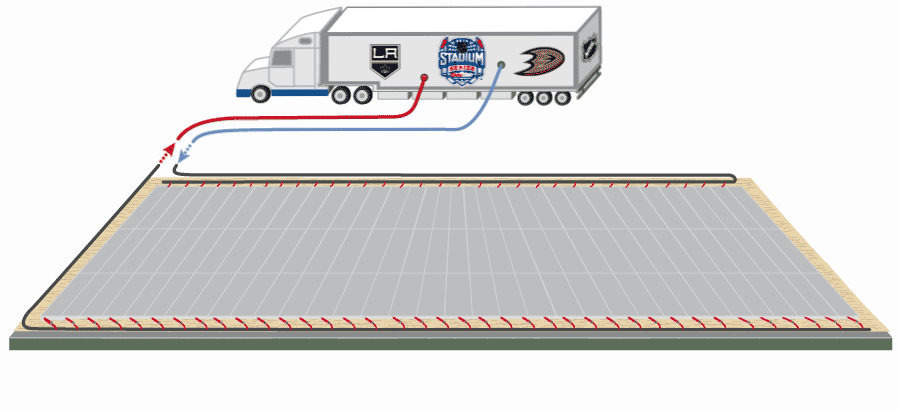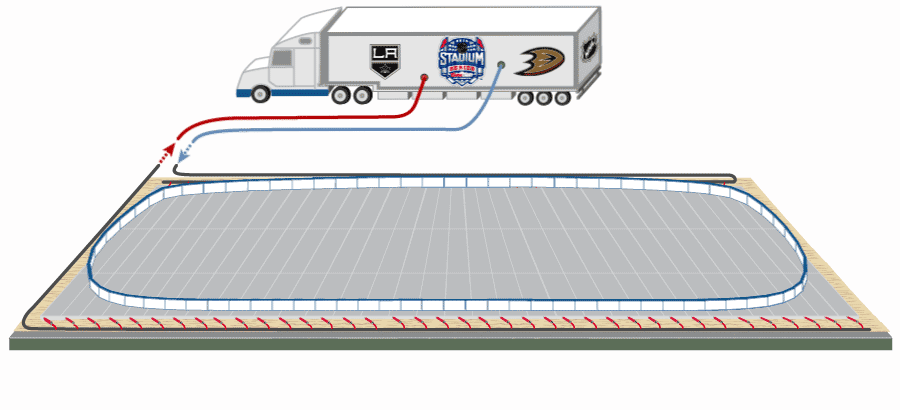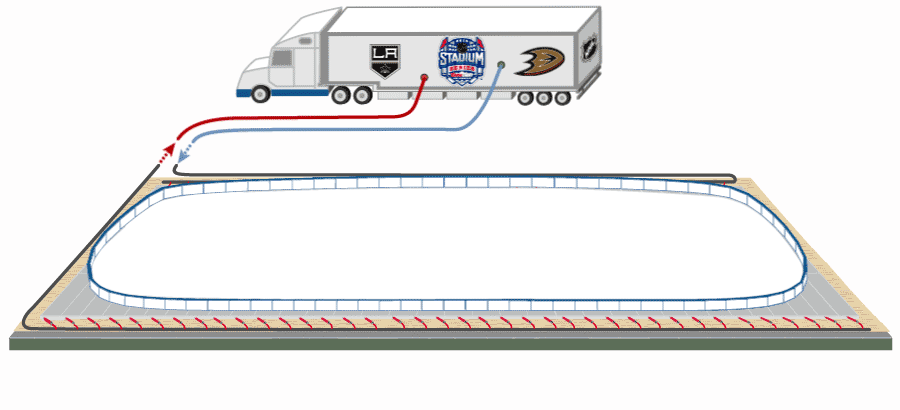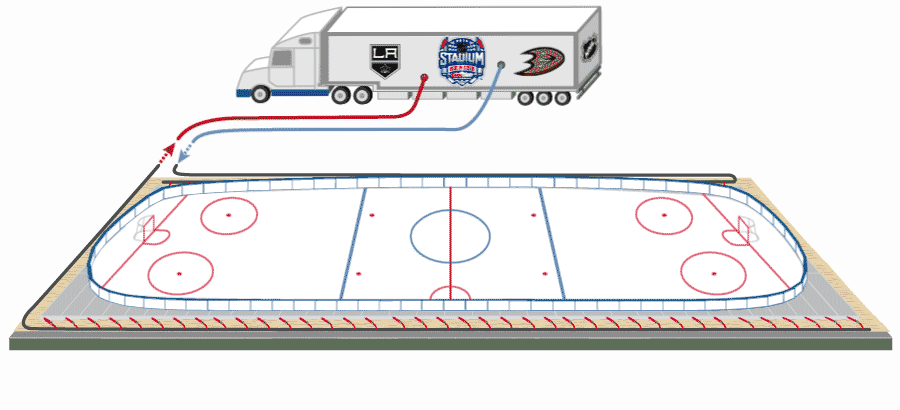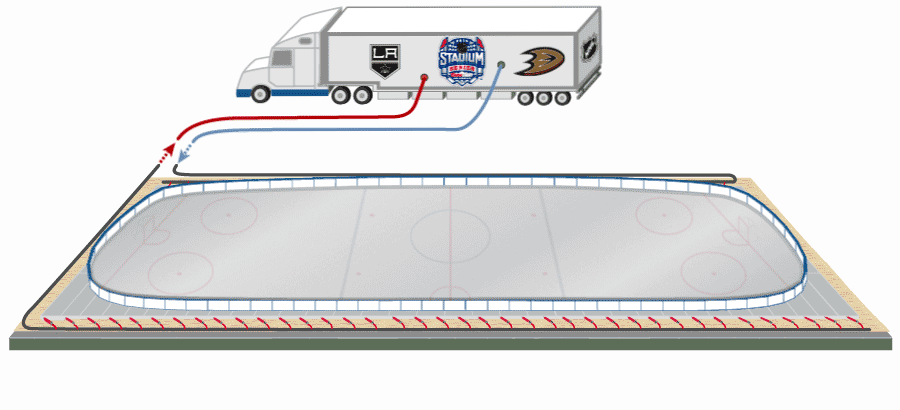The rink will be situated on the grass between the pitcher's mound and center field. No additional seating will be added.
A multi-layered surface will be placed over the grass to accommodate the ice.
Wood blocks will be laid across the field to create a level surface for the next layers. The dirt infield area will need to be built up.
Four-by-eight decking risers will have adjustable footings to make the leveling easier.
Four-by-eight pieces of plywood will be laid at 90-degree angles to the decking material.
Eighty aluminum trays, measuring 30 inches wide x 30 feet long, will be linked together in three rows, side by side. These will be filled with glycol coolant.
Pipes will carry the coolant through the ice pans, which will have embedded sensors to keep track of the temperature of the ice.
The refrigeration truck parked outside the center field fence will constantly circulate 3,000 gallons of coolant through the closed system.
The glycol warms slightly as it moves through the ice pans so it must be recirculated through the refrigeration unit to keep it at 22 degrees.
Boards will be attached to the ice pans and anchored together to form the perimeter of play.
Water will be sprayed over the pans until the ice is 2 inches thick. This could take 72 hours and about 20,000 gallons of water.
White paint will be sprayed on to give the ice a uniform appearance, followed by more water to add another layer of ice.
The center and face-off circles and the red and blue lines will be painted on.
Warm daytime temperatures could melt the ice, so a thick bubble-wrap-like plastic pad will be put in place. Most work will be done at night.
The ice will be ready for play in the standard NHL rink configuration.
 BACK
BACK





